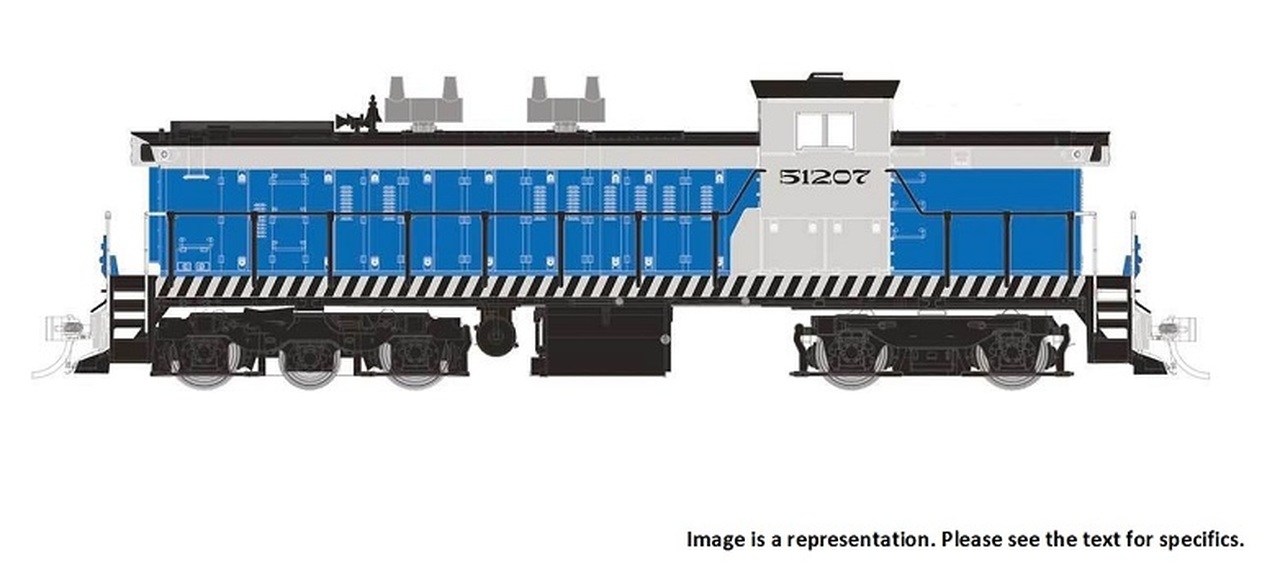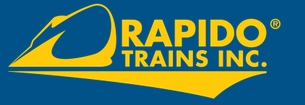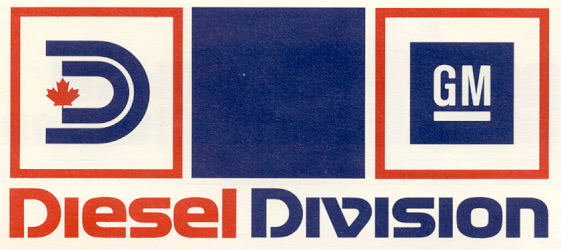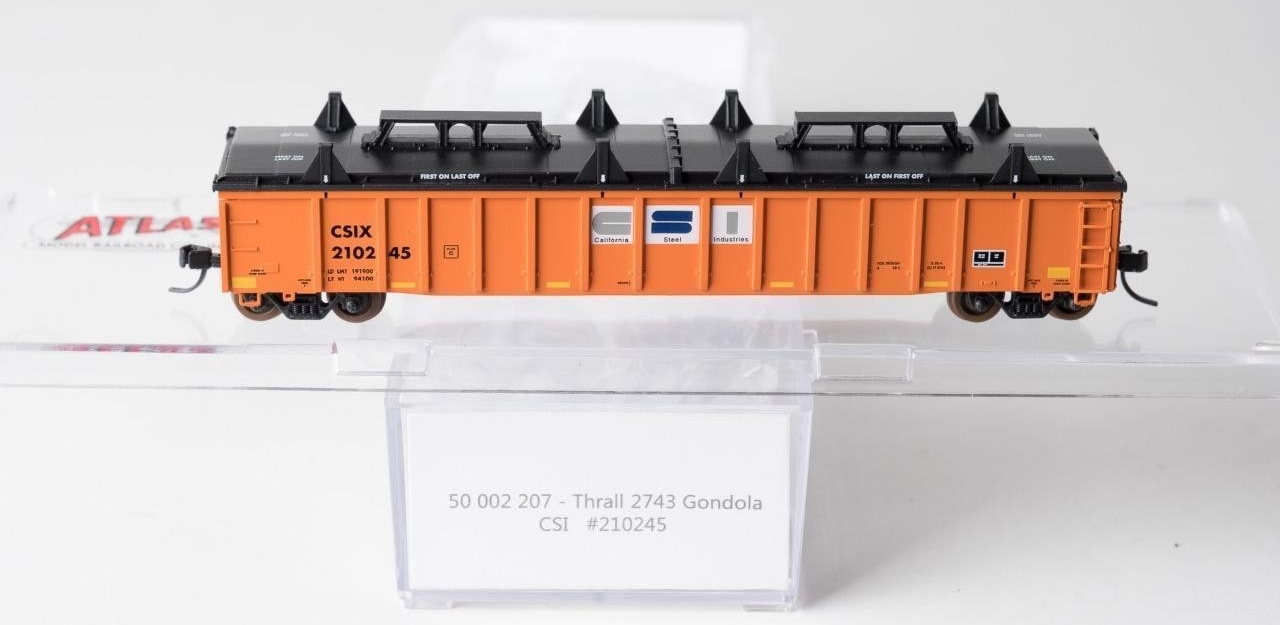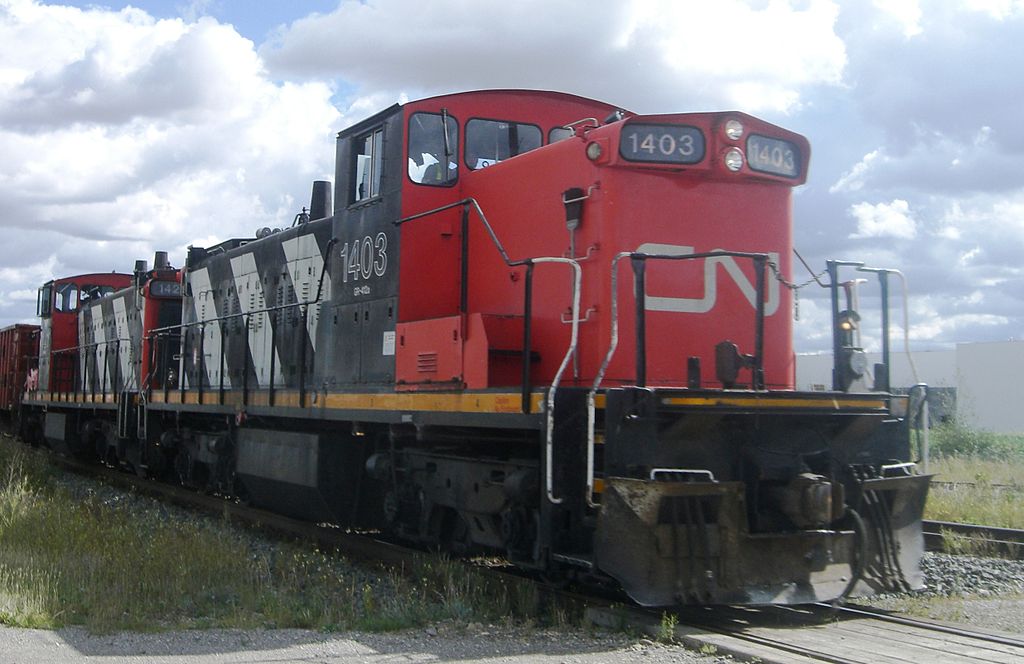Prototype History: The GMD GMD-1 is a diesel locomotive originally produced by General Motors Diesel (GMD), the Canadian subsidiary of General Motors Electro-Motive Division, between August 1958 and April 1960. This switcher locomotive was powered by a 12-cylinder EMD 567C diesel engine, capable of producing 1,200 horsepower. The GMD-1 was built on either Flexicoil A1A-A1A (for light rail prairie branchlines) or Flexicoil B-B trucks. 101 examples of this locomotive were built for Canadian railways. 96 went to Canadian National Railway and the remaining 5 went to Northern Alberta Railways (that later became part of CN's fleet when they acquired majority interest in NAR).
The 1000-series GMD-1 features A-1-A trucks to distribute its 120 tons over six axles and allow travel on light rail branches in the Prairies. The 1000-series GMD-1 was intended mainly for freight service, with its 65 MPH gearing and lack of a steam generator or pass-through steam lines. However, they could be used with Steam Generator Cars as their cabs were equipped with steam generator controls and blowdown buttons. All 78 1000-series GMD-1 locomotives were delivered between 1958 and 1960.
The 1000-series GMD-1 features A-1-A trucks to distribute its 120 tons over six axles and allow travel on light rail branches in the Prairies. The 1000-series GMD-1 was intended mainly for freight service, with its 65 MPH gearing and lack of a steam generator or pass-through steam lines. However, they could be used with Steam Generator Cars as their cabs were equipped with steam generator controls and blowdown buttons. All 78 1000-series GMD-1 locomotives were delivered between 1958 and 1960.
Road Name History: Ferrocarriles de Cuba (FCC) or Ferrocarriles Nacionales de Cuba (English: National Railway Company of Cuba), provides passenger and freight services for Cuba.
Ferrocarriles de Cuba uses 1,435 mm (4 ft 8 1⁄2 in) standard gauge that extends from Guane (province Pinar del Río) in the westernmost part of the island up to the bay of Guantánamo in the eastern part. The 835 kilometers (519 mi) central railway runs from Havana to Santiago de Cuba in the eastern region. Most of the 4,226 kilometers (2,626 mi) system is diesel powered with 140 kilometers (87 mi) electrified. The flagship Train Number 1 travels between Havana and Santiago de Cuba. Other long distance passenger services link Havana to Pinar del Río (western railway), Cienfuegos (South branch), Sancti Spiritus, Bayamo-Manzanillo and Guantanamo. The network connects the six first level ports in Cuba: Havana, Mariel, Matanzas, Cienfuegos, Nuevitas and Santiago de Cuba, as well as all province capital cities.
Ferrocarriles de Cuba uses 1,435 mm (4 ft 8 1⁄2 in) standard gauge that extends from Guane (province Pinar del Río) in the westernmost part of the island up to the bay of Guantánamo in the eastern part. The 835 kilometers (519 mi) central railway runs from Havana to Santiago de Cuba in the eastern region. Most of the 4,226 kilometers (2,626 mi) system is diesel powered with 140 kilometers (87 mi) electrified. The flagship Train Number 1 travels between Havana and Santiago de Cuba. Other long distance passenger services link Havana to Pinar del Río (western railway), Cienfuegos (South branch), Sancti Spiritus, Bayamo-Manzanillo and Guantanamo. The network connects the six first level ports in Cuba: Havana, Mariel, Matanzas, Cienfuegos, Nuevitas and Santiago de Cuba, as well as all province capital cities.
Brand/Importer Information: Rapido Trains Inc. is a high-end manufacturer of model trains and accessories in HO, OO and N (North American 1:160 and British 1:148) scales. The firm's mission is to recreate the entire rail travel experience, from fully-detailed interiors and under-frames on models to fully-wired telephone poles for model railroads.
The name RAPIDO was introduced by Canadian National in 1965 to headline the railway's high-speed intercity passenger services. Until the mid-1980s, RAPIDO stood for fast schedules, frequent trains, and superb service.
Today, Rapido Trains continues the RAPIDO concept with state-of-the-art models and attention to fine detail. This company is not related to the venerable (and now defunct) German manufacturer Arnold Rapido, nor the present-day Arnold (which is owned by the United Kingdom's Hornby), Canadian based Rapido Trains was founded in 2003.
The name RAPIDO was introduced by Canadian National in 1965 to headline the railway's high-speed intercity passenger services. Until the mid-1980s, RAPIDO stood for fast schedules, frequent trains, and superb service.
Today, Rapido Trains continues the RAPIDO concept with state-of-the-art models and attention to fine detail. This company is not related to the venerable (and now defunct) German manufacturer Arnold Rapido, nor the present-day Arnold (which is owned by the United Kingdom's Hornby), Canadian based Rapido Trains was founded in 2003.
Item created by: Jenna on 2019-11-19 13:46:55. Last edited by Jenna on 2019-11-19 13:46:56
If you see errors or missing data in this entry, please feel free to log in and edit it. Anyone with a Gmail account can log in instantly.
If you see errors or missing data in this entry, please feel free to log in and edit it. Anyone with a Gmail account can log in instantly.


